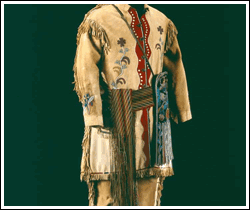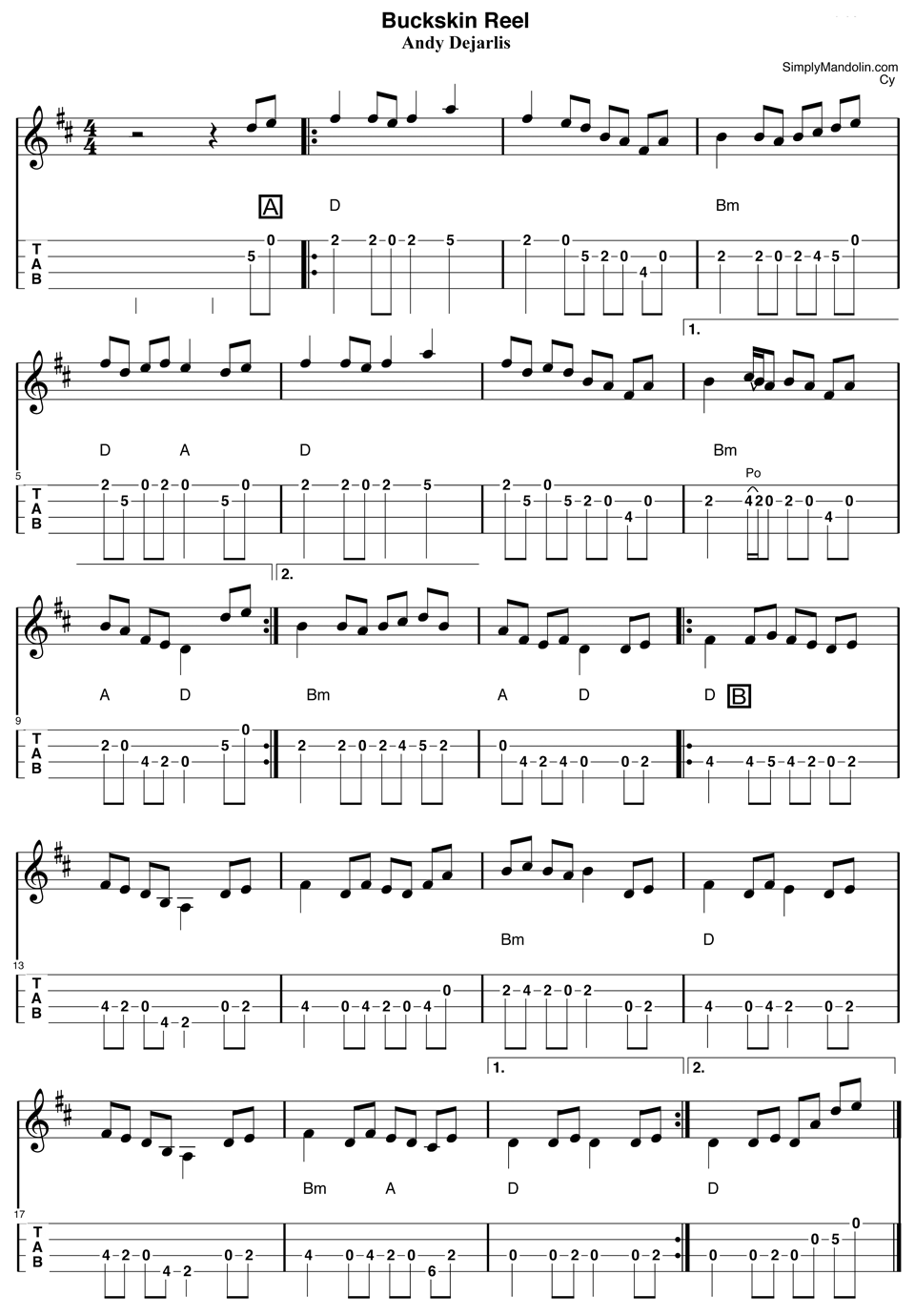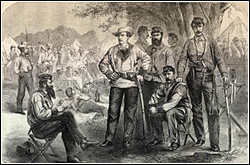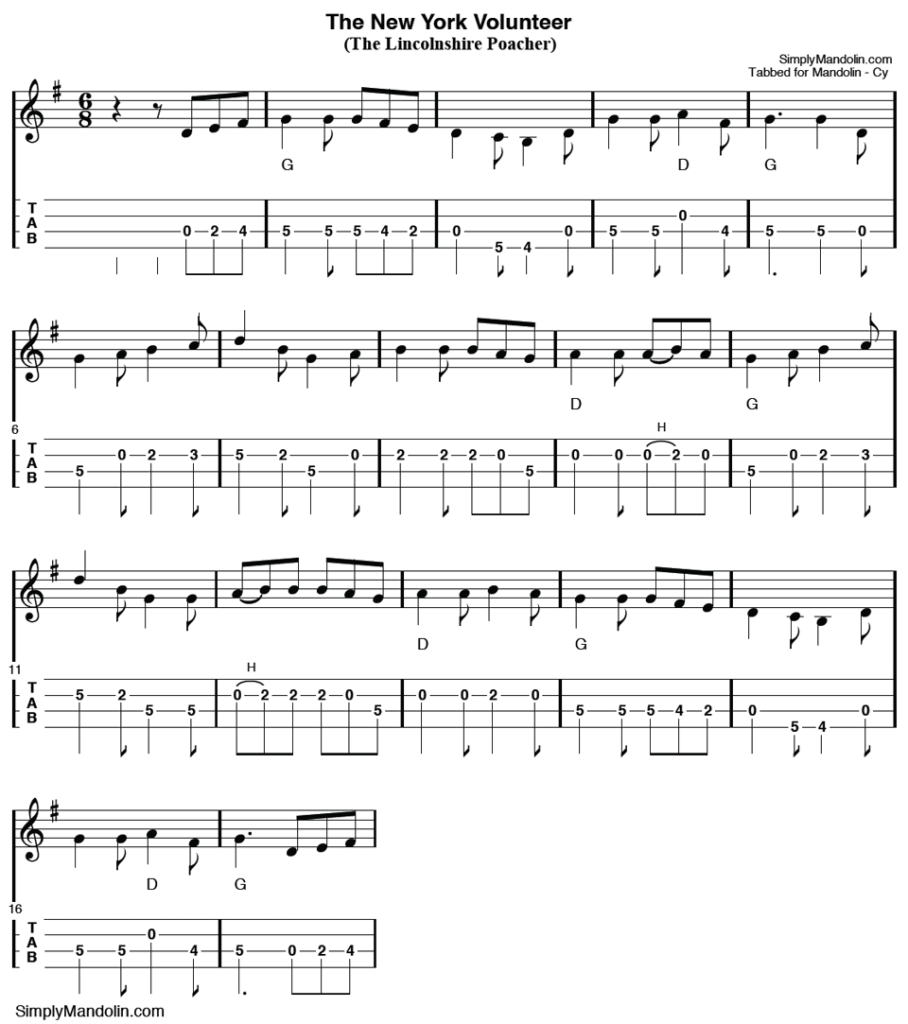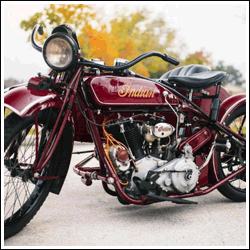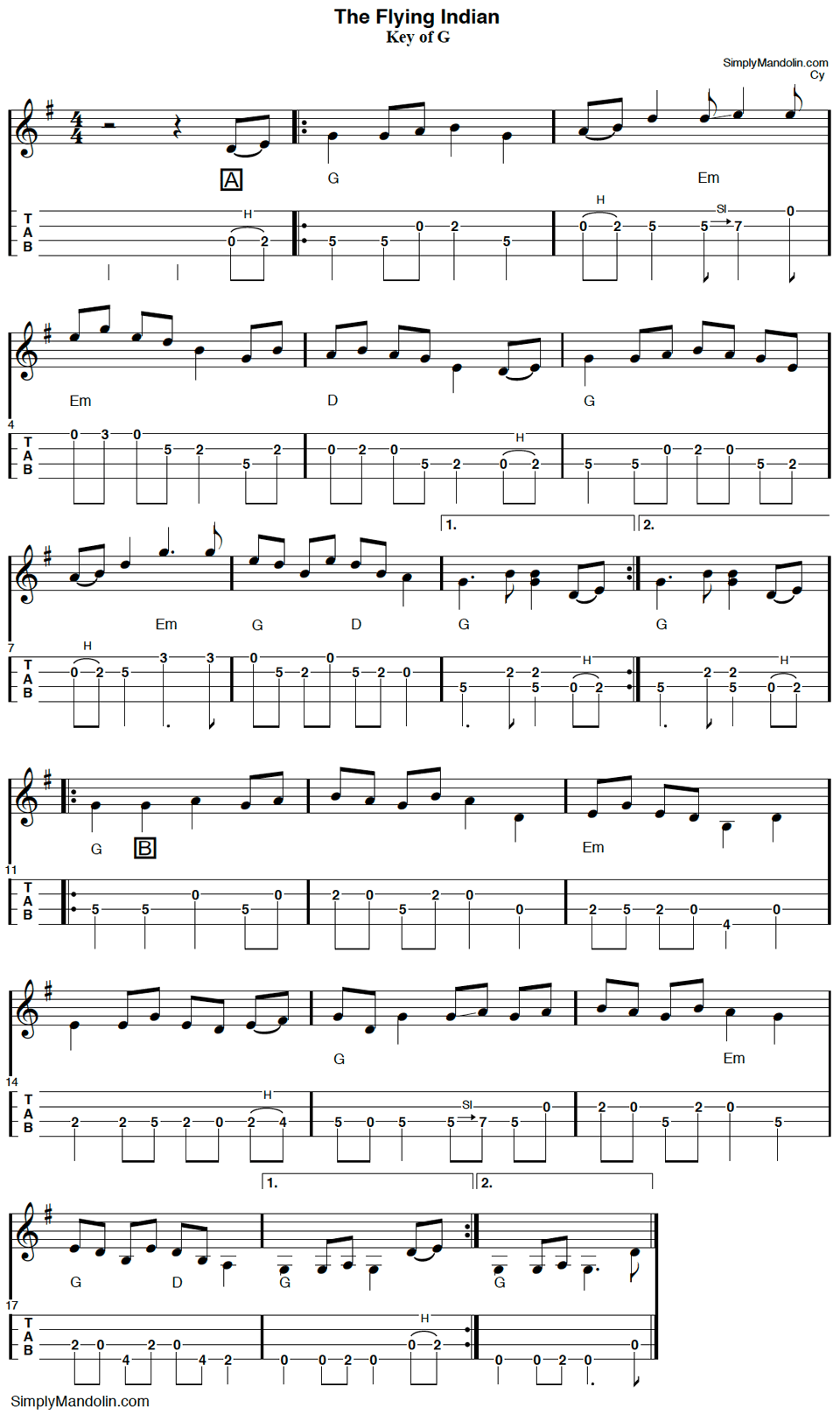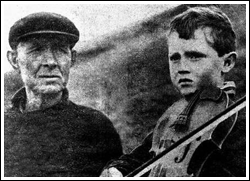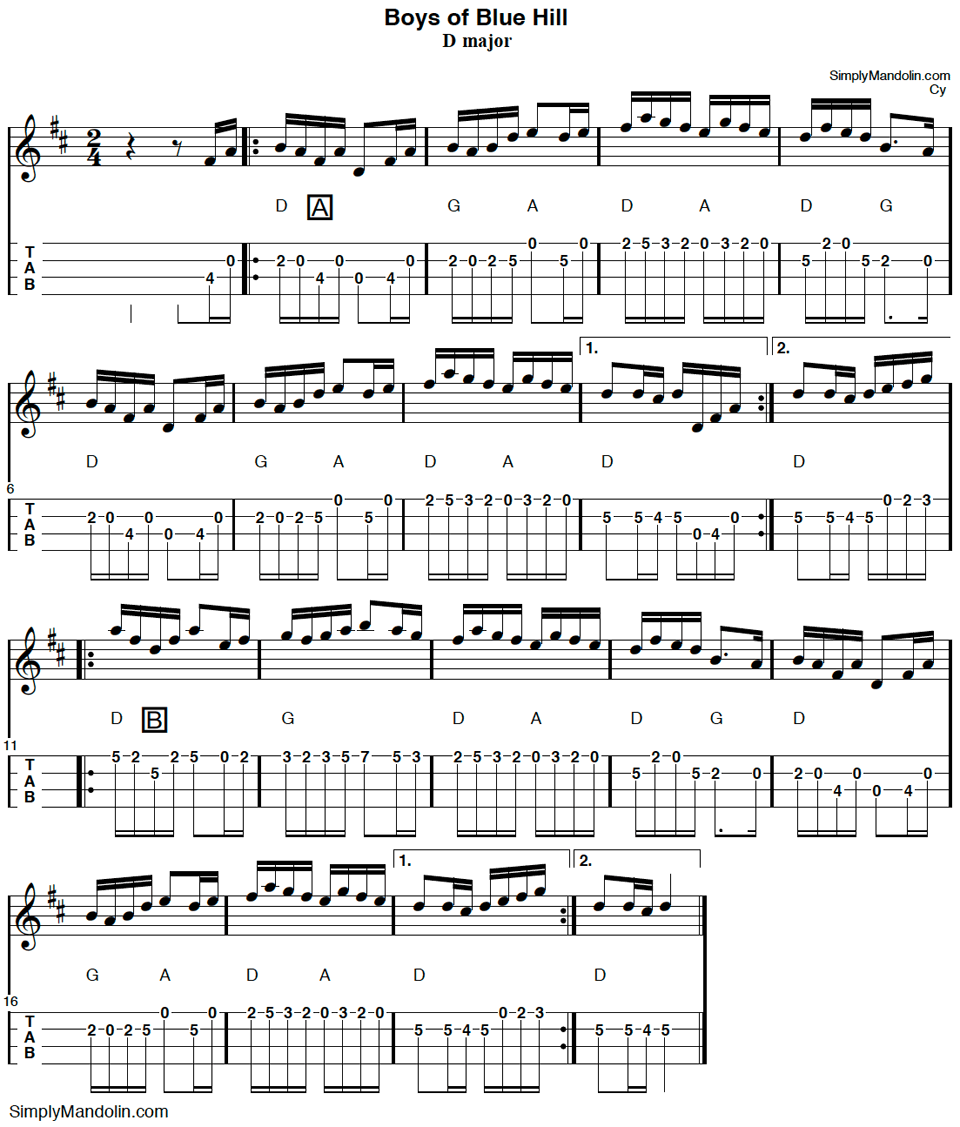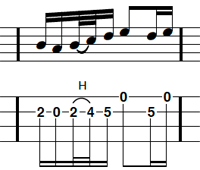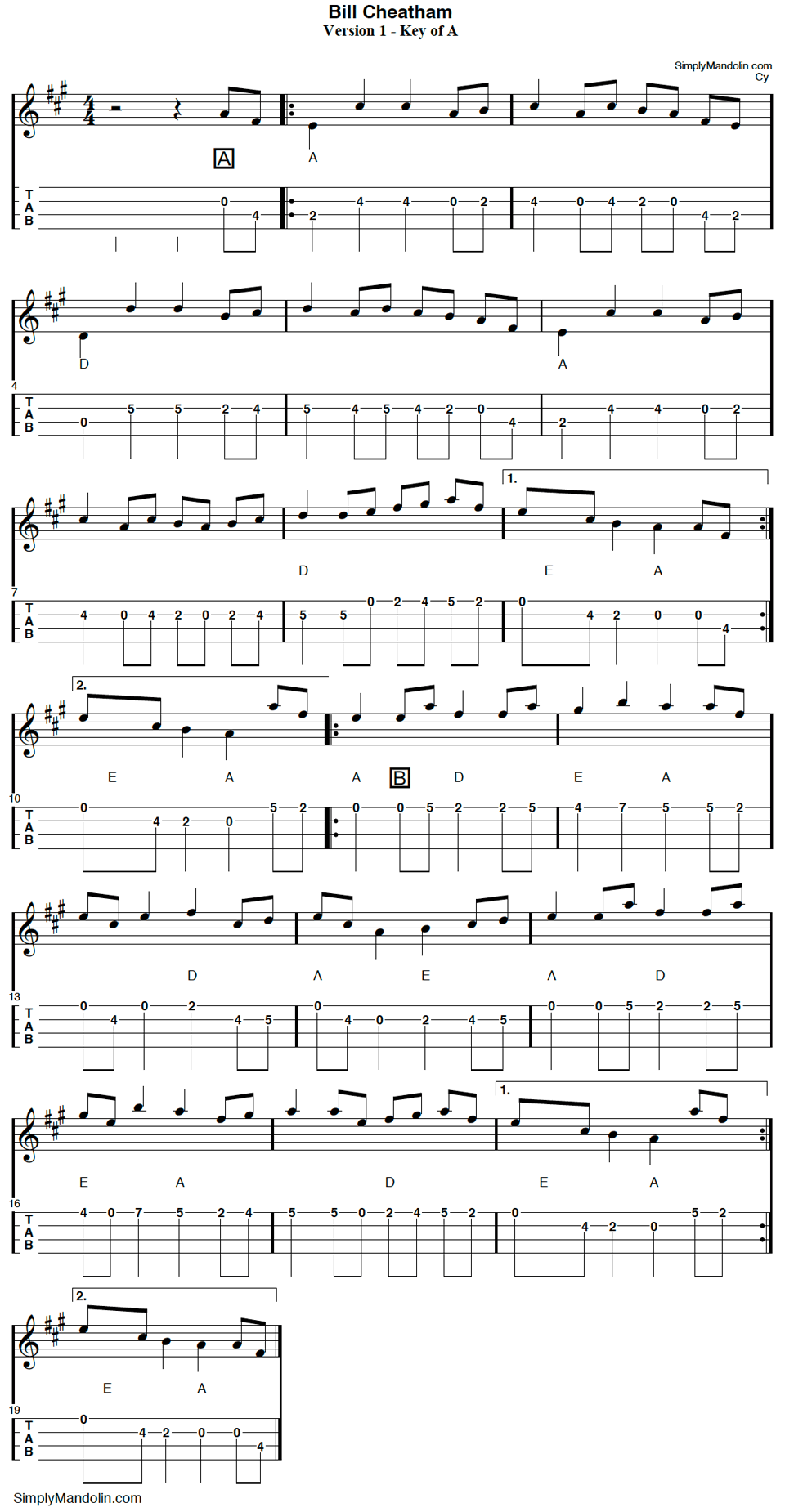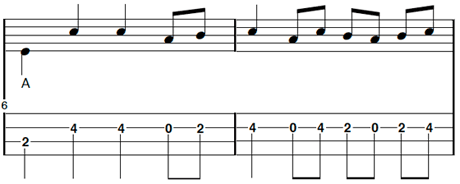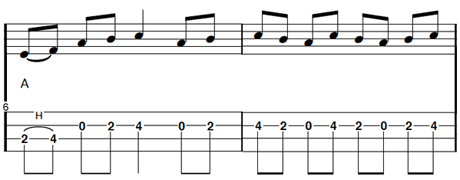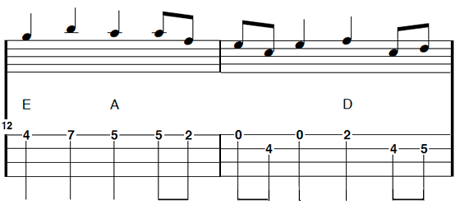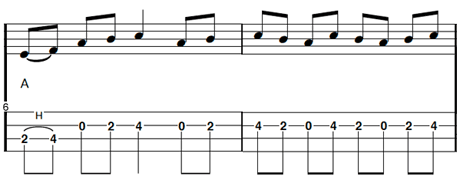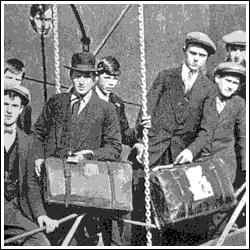
Irish immigrants heading for the U.S.
Just the name of this tune, “Off to California“, brings up images and stories of immigrants getting on a boat and heading to the ‘new country’ – heading to America.
The movies I watched as a kid often portray it in different ways, and sometimes it all seemed kind of exciting and romantic. Although, years ago, it wasn’t.
I can’t imagine the hardships and suffering that these adventurers and families must have gone through in search of a new life in America.
And in those days,moving through uncharted territory and crossing mountains to get to California would have been that much more difficult.
A Little History
In 1821, Mexico gained independence from Spain. What is now known as California became Mexican territory. There was some settlement around the different trading ports, but most the population consisted of nomadic natives, traders, trappers and adventurers. There was no real law, and the southern areas were mostly controlled by a couple of prominent Mexican families.
California remained under Mexican control for 25 years. Texas had gained independence from Mexico in 1836, it was not yet a state and some lands in the territory were still disputed. In 1846 Mexican cavalry attacked and killed U.S. soldiers on this disputed land, and the U.S. entered into war with Mexico.
The war lasted about 2 years, and California became U.S. property as part of the treaty agreement ending the Mexican-American War. Amazingly, just days before the Mexican Government gave up the land, gold was discovered in California.
The Chords
Here are some chords that I might use in attempting to back up this melody. Of course, these are just suggestions. You can use the full chord, or completely different voicings if something else suits your ear.
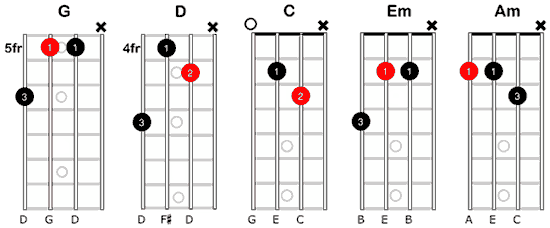
The Tune
“Off to California” is a traditional Irish hornpipe. The tune is one of many melodies collected by Francis O’Neill and later published in “O’Neill’s Music of Ireland“.
There are two settings in that publication (#1628 and #1629). If you look at those settings you’ll notice the dotted quarter notes.
Hornpipes are supposed to have a little ‘lilt’, or a ‘bounce’ to them, and that’s often written with dotted quarter notes. I sometimes find that sounds a little static, or a little much, like.. Ta Da, Ta Da, Ta Da, Ta Da… I like the bounce to be a little less pronounced, but that’s just my opinion. You, of course, will play it how you like!
I’ll usually tab out a hornpipe without the dotted notes, then put the lilt and emphasis in wherever I want. But sometimes, I just end up playing the hornpipe more like a reel. Especially when I speed up.
“Off to California” is in the key of G Major, and I’ve tabbed it out in 4/4 timing (without dotted notes). The second version is slowed down a little, with a bit of a bounce.
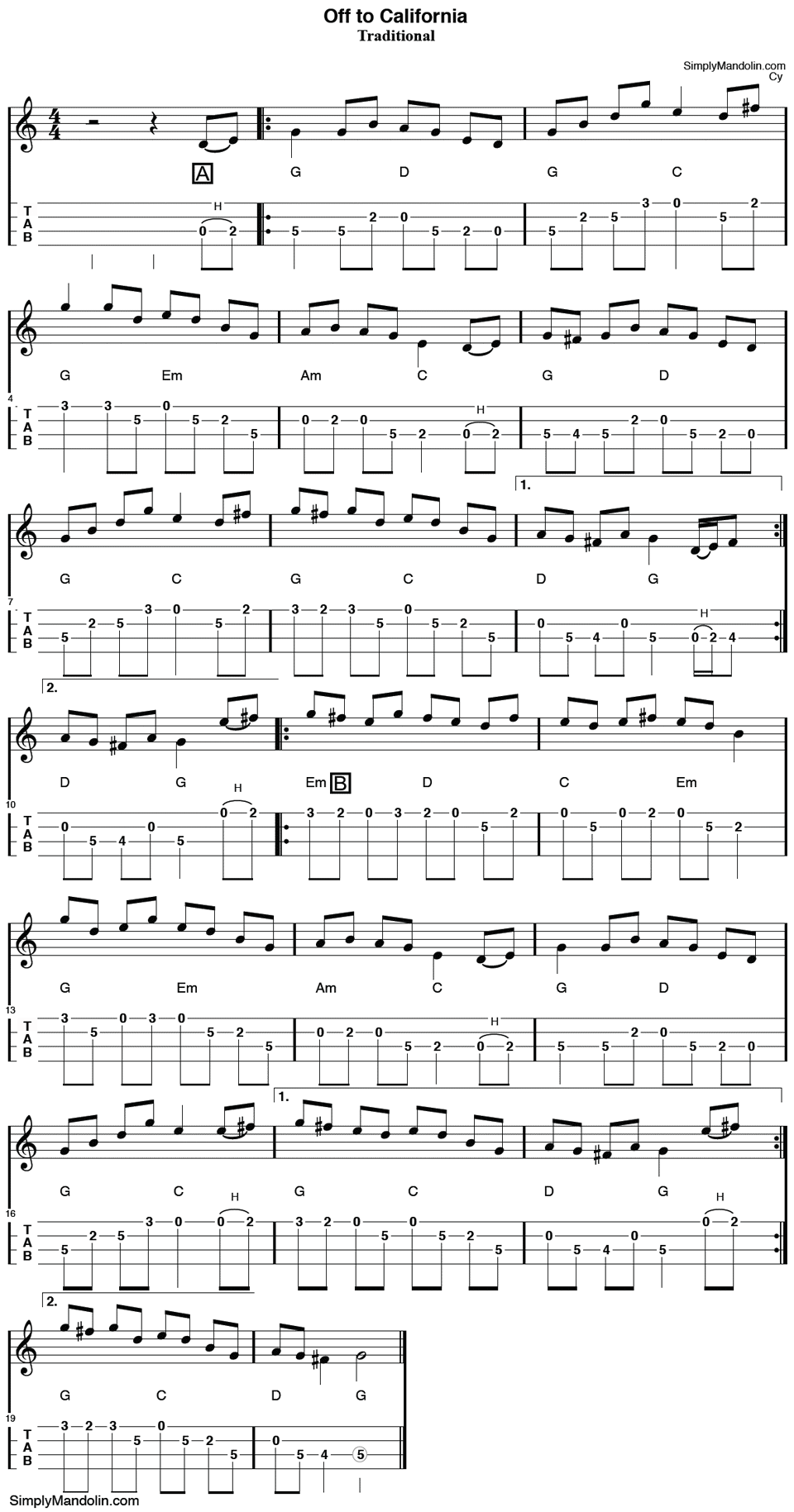
What a rush!
During the ‘California gold rush‘, it’s estimated that over 130,000 people entered over the California Trail, and even more arrived by sea. As a result, the population increased 1000-fold and, though it wasn’t even a Territory yet, U.S. Congress rushed to incorporate California into the Union. In 1850, California became the 31st U.S. State.
Sometime in 1853, Congress appropriated funds to survey, and establish routes that would connect the Atlantic and Pacific coasts. Ten years later, they contracted the Union Pacific Railroad, and the Central Pacific railroad to build the ‘Transcontinental Railway‘.
After the end of the civil war in 1865, there was a big push to finish the railway and join the country together. On May 10th, 1869, the two railways had met, and the last spike was driven into the rail line at Promontory, Utah. As a result, towns flourished all across the U.S., and travel ’off to California” was now cheaper, faster and much safer.
Today, California is the most populated state in the U.S.A.
Don’t Miss a Beat!
Join our mailing list for new tabs, practice ideas and study material.
Keep informed of new projects. Its free!
No spam, ever. That’s a promise!


